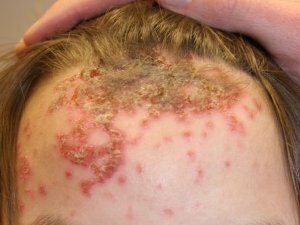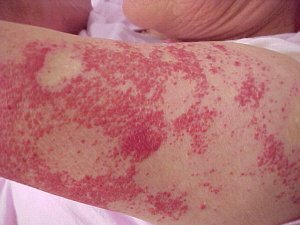Treatment of hair loss
 Beautiful and thick hair at all times was an indicator of human health. Growth and hair loss are natural and constant processes for the body. For a natural hair replacement, a loss of 40 to 100 hair per day is typical. The quantity of the dropped out hair increases in autumn and winter time and during pregnancy of the woman. In some cases, hair loss is a signal to the fact that violations began in the body.
Beautiful and thick hair at all times was an indicator of human health. Growth and hair loss are natural and constant processes for the body. For a natural hair replacement, a loss of 40 to 100 hair per day is typical. The quantity of the dropped out hair increases in autumn and winter time and during pregnancy of the woman. In some cases, hair loss is a signal to the fact that violations began in the body.
Head hair structure
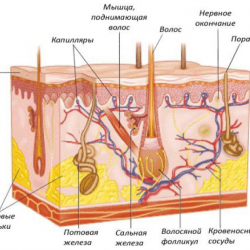
Causes of hair loss
Increased hair loss is called allopecia and can lead to baldness of the head and other areas of the body. The causes and factors for the development of this disease are very many distinguish three main reasons:
- Diffuse( symptomatic) alopecia .In this case, hair loss is considered as one of the manifestations of disruption of the body or the consequence of the disease. The pattern of prolapse is intense, uniform throughout the scalp. Symptomatic allopecia can cause stress, pregnancy and childbirth, long-term use of potent drugs, chemotherapy courses, improper nutrition, hormonal disorders, anemia, thyroid dysfunction, infectious diseases, chemical and thermal damage to hair and scalp, even some types of hairstyles. This type of allopecia is completely reversible, provided that the root cause is eliminated.
- Androgenetic alopecia .This is more common in men and is otherwise called allopecia in the male type. It develops because of the negative impact on the hair follicles of male sex hormones. Alopecia in men begins with the frontal and temporal lobes, the characteristic signs become visible by the age of 20, but hair loss can begin from the age of 14.In women, full allopecia is not observed, thinning and hair loss begins in the central - parietal region. It is observed in women at a later age( 40-50 years) during hormonal changes in the body during menopause. Often patients with androgenetic alopecia do not attach much importance to the thinning hairdress due to heredity, however, there are a number of diseases in which hair falling out is a syndrome. This type of baldness can be connected:
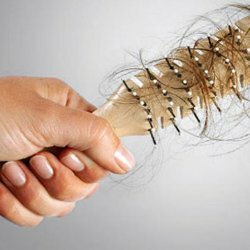
- in men - with ischemic heart disease, diabetes, chronic prostatitis, hypertension;
- Women - a violation of the ovaries, adrenal glands and other hormonal failures that lead to irregular menstruation, obesity, hirsutism, acne.
- Focal( alimentary) alopecia .It is characterized by one or more foci of hair loss that can merge with each other. Sometimes it affects the eyebrows, eyelashes and hair on the face. It can be a symptom of chronic infectious diseases( especially dermatological - atopic eczema, vitiligo), hormonal failure( thyroid disease, systemic lupus, rheumatoid arthritis), the consequence of nervous shock, stress. Anyone can have any dependence on sex, race and age.
- Cicatricial alopecia .Hair follicles under this kind of allopecia undergo permanent damage and destruction, due to congenital pathology of the hair, trauma, exposure to strong temperatures, radiation exposure. Also, the cause may be diseases such as tuberculosis, herpes, syphilis, leprosy, lichen planus, sarcoidosis.
Treatment of hair loss
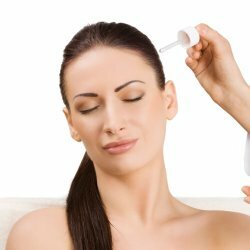 For full-fledged treatment it is very important to identify the cause of the disease. It is not enough simply to remove symptoms, in particular to stop profuse hair loss, sometimes very serious diseases with more harmful consequences for the whole organism are hiding behind them. Currently, there are many methods for treating baldness - treatment with drugs stimulating hair growth, vacuum massage, a complex of physiotherapy, injections of steroids, laser treatment. In cases of irreversible damage to the follicles, surgical transplantation is used. In combination with the prescribed treatment, it is recommended to do self-massage, masks to improve blood circulation and nutrition of the scalp, adjust the lifestyle - eat properly, sleep properly and avoid stressful situations.
For full-fledged treatment it is very important to identify the cause of the disease. It is not enough simply to remove symptoms, in particular to stop profuse hair loss, sometimes very serious diseases with more harmful consequences for the whole organism are hiding behind them. Currently, there are many methods for treating baldness - treatment with drugs stimulating hair growth, vacuum massage, a complex of physiotherapy, injections of steroids, laser treatment. In cases of irreversible damage to the follicles, surgical transplantation is used. In combination with the prescribed treatment, it is recommended to do self-massage, masks to improve blood circulation and nutrition of the scalp, adjust the lifestyle - eat properly, sleep properly and avoid stressful situations. Folk remedies for hair loss
 The effect of treatment with folk remedies appears after 1-2 months of regular use. Do not use masks and decoctions, if the scalp is injured or a person has an individual intolerance to the components. If medications are prescribed, be sure to coordinate the use of traditional medicine with your doctor. For the period of treatment it is necessary to abandon aggressive shampoos, styling products and drying hair with a hair drier.
The effect of treatment with folk remedies appears after 1-2 months of regular use. Do not use masks and decoctions, if the scalp is injured or a person has an individual intolerance to the components. If medications are prescribed, be sure to coordinate the use of traditional medicine with your doctor. For the period of treatment it is necessary to abandon aggressive shampoos, styling products and drying hair with a hair drier. Broth for rinse
- Broth of nettle. Green( best young) nettle chop, pour water and cook for about 10-15 minutes. When it cools down, drain and use as a conditioner.
- Decoction of burdock leaves. Pour 5 spoons of crushed dry leaves 1 liter of boiling water, wrap and insist 2 hours. Thoroughly strain, dilute halfway with water and use as a conditioner.
- Onion broth. Shelukh with 5-6 large bulbs pour two liters of water, boil for 15-20 minutes and this decoction wash the head.
- Lime decoction. Dried linden flowers( 8 tablespoons) pour half a liter of water and boil on low heat for 30 minutes. It is recommended to use it for washing hair for a month. In people with blond hair, hair may become slightly dark when applied.
- Decoction from the rhizomes of the aura. They need to be cut into small pieces( should be about 6 tablespoons), pour 1 liter of vinegar and boil for 15 minutes.
Mask for rubbing
- Complex mask. Take 1 yolk, add the juice of the medium bulb and the same amount of castor oil. Stir, rub in hair at the root for 45 minutes, wrapped in a warm towel. Apply not more than 8 times a month.
- Honey mask. In boiled water, cooled to 40-50 ° C, add honey: for 1 liter of water, 2 tablespoons of honey. This water moisten the head or rub into the scalp 2 times a week.
- Mask from yogurt. Apply to the hair and hold for 15-20 minutes.
- Burdock mask. Roots of the boil up to soften, wipe through a sieve. Apply once a week.
- The salt mask. Salt( sea or cookery) mixed with water to the state of gruel. Wipe in wet hair, wrapped in a towel, hold for 15 minutes.
Tinctures
- Tincture made from chili peppers.2-3 medium pepper should be poured 0.5 liters of vodka and soak in a dark cool place for 1 week. The resulting solution is rubbed into the head before each wash for 20 minutes.
- Tincture of parsley. Grind the parsley root( 1 tsp), mix with 96% alcohol( 1 tsp) and castor oil( 2 tsp), rub into the scalp. Do 15 procedures.
- Castor oil mixed with 96% alcohol in a 1: 1 ratio, and rubbed into the scalp. It is recommended to apply several times a week.
- Calendula tincture. We prepare the solution from the tincture of calendula and castor oil in the proportion( 10: 1) and rub it into the roots of the hair. Apply twice a week.

